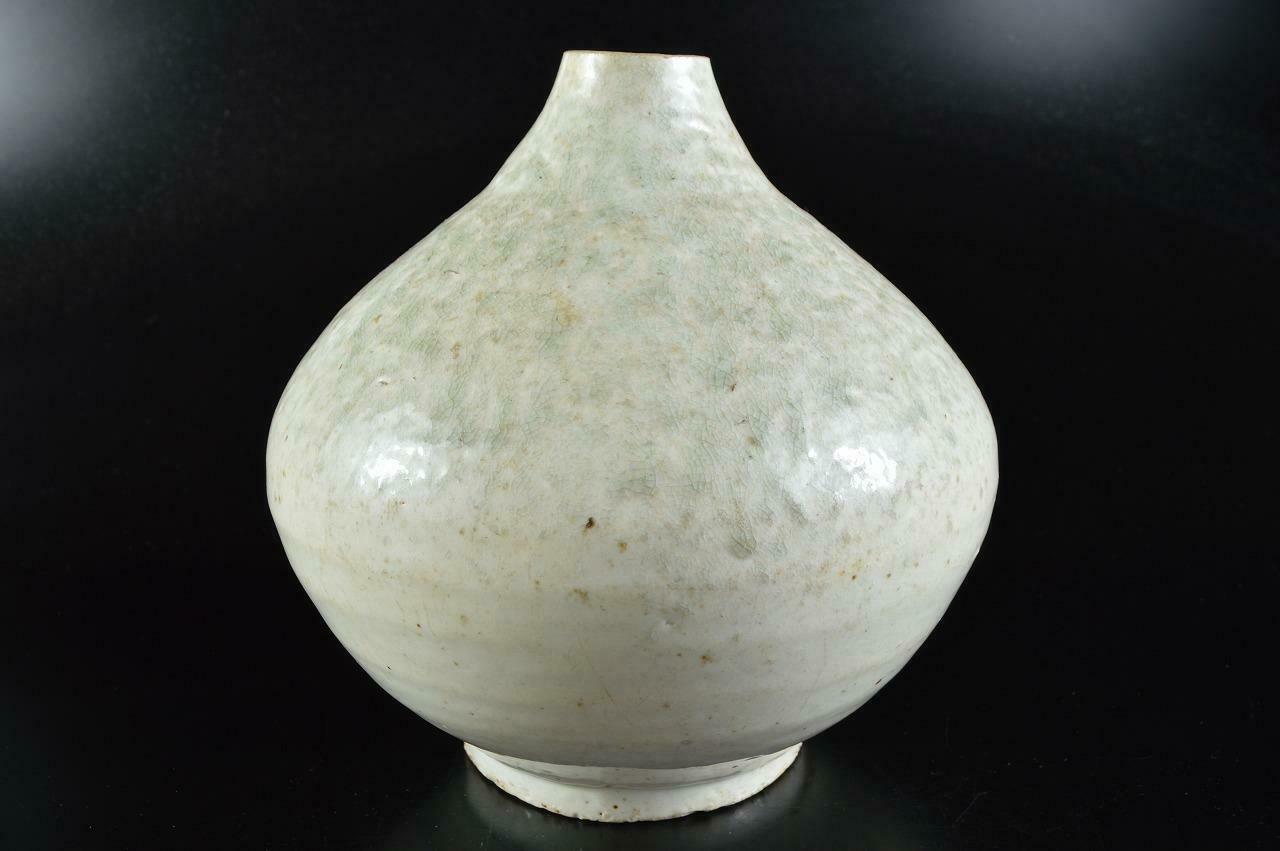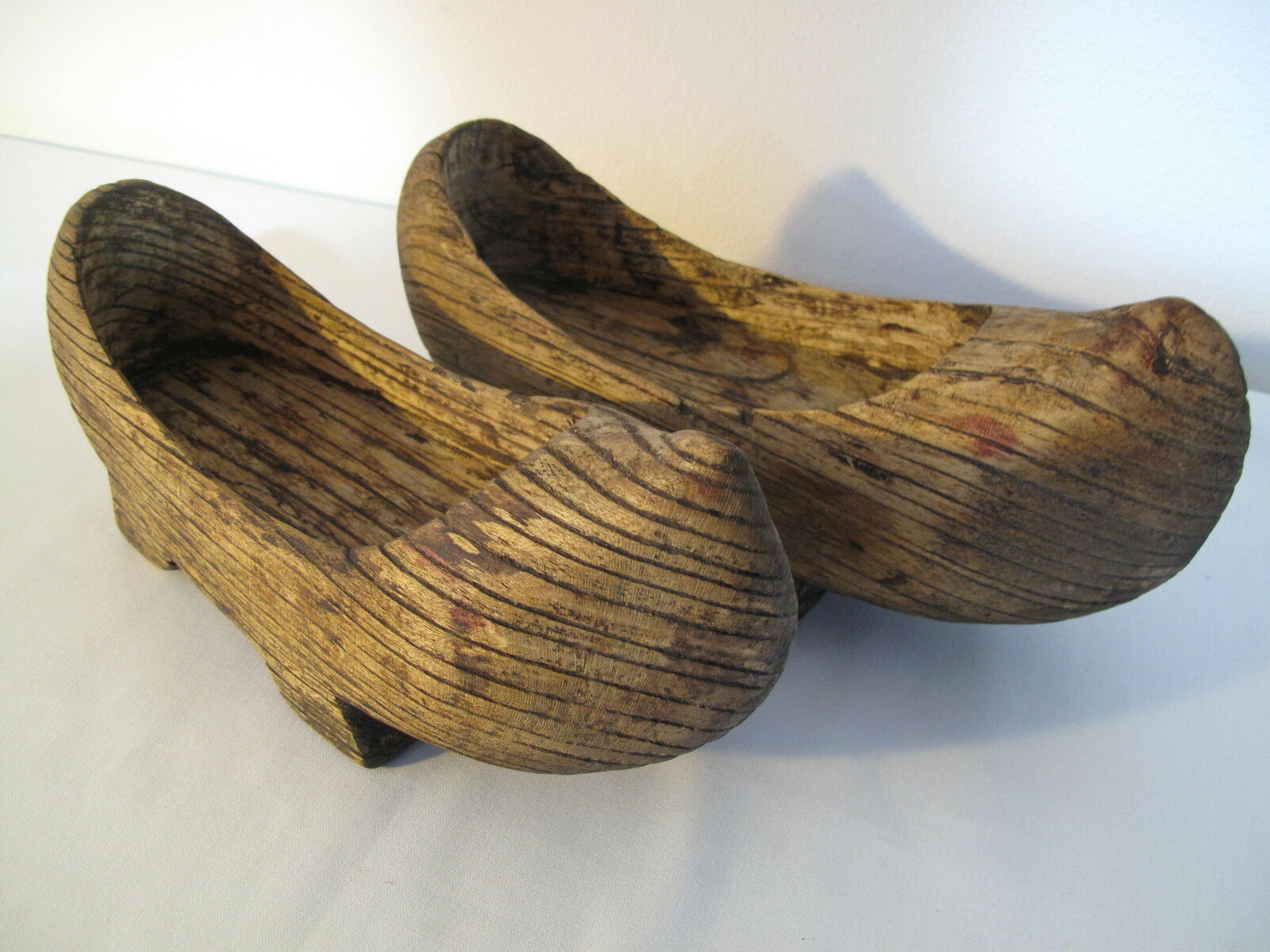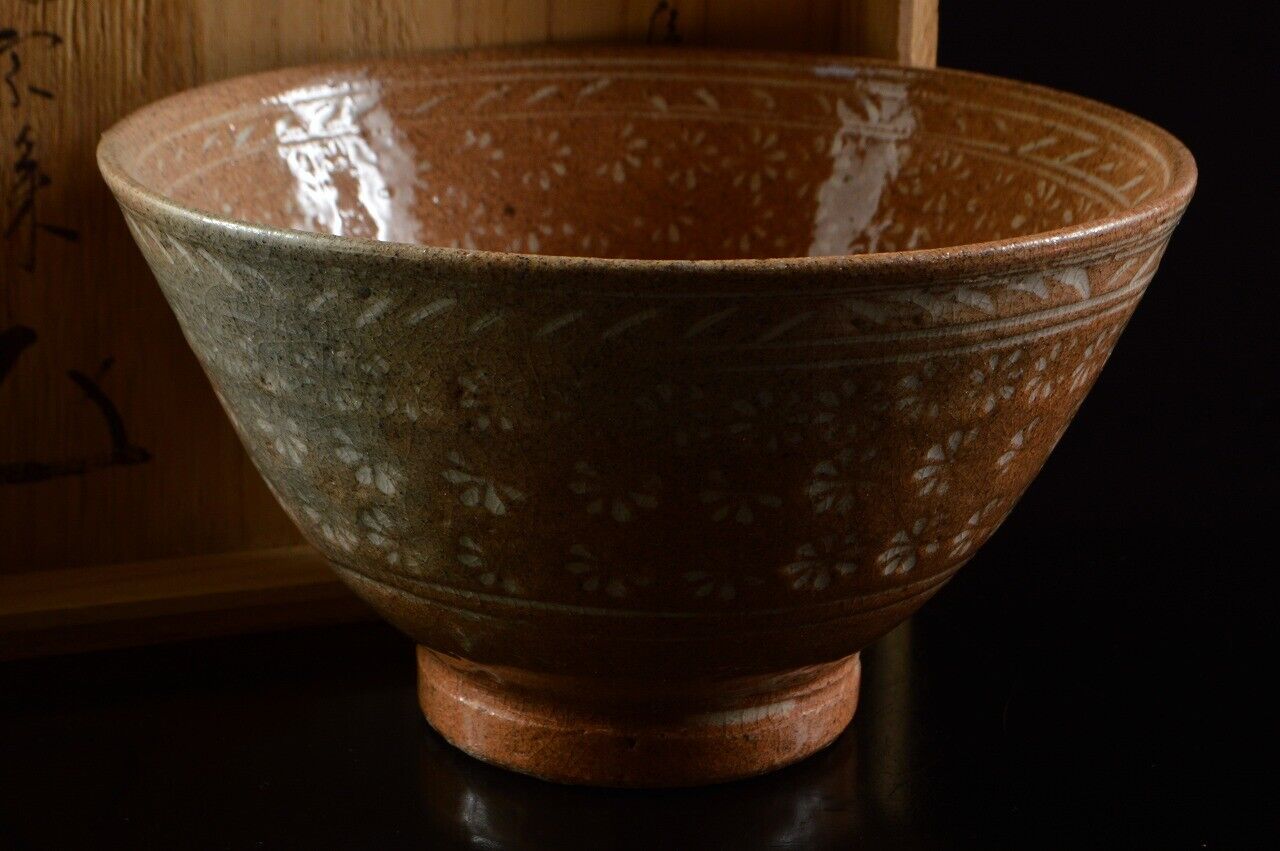-40%
Extremely Rare Korean Porcelain Copper Red Bird Jar or Vase 18th Good Provenance
$ 213.83
- Description
- Size Guide
Description
Extremely Rare Korean Porcelain Copper Red Decorated Sparrow Jar 18th Century, Joseon Dynasty Dimensions: 6.25" (16 cm) Height The deep red of the birds and branches on this jar results from oxidized copper, which was difficult to manipulate. In Joseon Korea, the limited production of porcelain with underglaze copper-red decoration was concentrated in the eighteenth century. Remnants of old labels are still present on the inside of the jar, probably from old collections or exhibitions. Amazing Provenance: From the collection of George Leslie Stout who was an incredible individual for the Asia Arts community creating new conservation methods at Harvard, Serving as Director for 2 Major US Museums, and serving his country as Chief of Division during WWII as a "Monuments Men" in Europe and Asia. George Clooney's character in the film of the same name is loosely based on George. Provenance documents provided with purchase. His Wikipedia page Below George L. Stout From Wikipedia, the free encyclopedia Jump to navigationJump to search George L. Stout George Leslie Stout, circa 1965 George Leslie Stout, c. 1965, Archives of American Art[1] Birth name George Leslie Stout Born October 5, 1897 Winterset, Iowa Died July 1, 1978 (aged 80) Santa Clara, California Service/branch U.S. Naval Reserve and U.S. Army Awards Bronze Star, Army Commendation Medal,[1] Congressional Gold Medal [2] Spouse(s) Margaret Hayes Stout[1] Other work Art conservation, museum director George Leslie Stout (October 5, 1897 – July 1, 1978) was an American art conservation specialist and museum director who founded the first laboratory in the United States to study art conservation, as well as the first journal on the subject of art conservation. During World War II, he was a member of the U.S. Army unit devoted to recovering art, the Monuments, Fine Arts, and Archives section (MFAA), a.k.a. "The Monuments Men."[3] Contents 1 Life and career 2 Quotes 3 Legacy 4 Selected publications 5 References 6 External links Life and career[edit] Stout was born on October 5, 1897, in Winterset, Iowa (which was also the birthplace of actor John Wayne).[4] He studied at Grinnell College for two years and then served in a U.S. military hospital unit during World War I.[5] After the war, he completed his undergraduate degree at the University of Iowa, taught painting in the art department for a couple of years, then traveled throughout Europe. In 1924, he married Margaret Hayes, with whom he had two sons, Robert and Thomas.[1] In 1926, Stout began work on his master's degree at Harvard University. In 1929, he graduated and started his museum career in the art conservation department of Harvard's Fogg Art Museum, where he worked as a lecturer and conservator.[1] Along with Harvard chemist Rutherford John Gettens, Stout pioneered three major areas of art conservation: rudiments, degradation, and reparations. This helped bring art conservation work into the world of modern science.[6] He became head of the Fogg's conservation department in 1933, a position he held until 1947.[1] In 1942, with Rutherford John Gettens and introduced by Edward W. Forbes he published the seminal Painting Materials: A Short Encyclopaedia.[7] A Navy reservist for some time, Stout was placed on active duty in 1943, and soon after joined the Twelfth Army Group. Because of his art conservation background, he was one of the first recruited to the Monuments, Fine Arts, and Archives section (MFAA). The group was charged with the protection of and documentation of damages to European cultural monuments during World War II, as well as the investigation, location, recovery, and repatriation of art that had been plundered by the Nazis.[8] While in Europe from 1944-1945, he supervised the inventory and removal of several thousand art works from repositories hidden in salt mines, churches, and other locations, and was appointed as the deputy commander of the MFAA.[1] After Japan's official surrender on September 2, 1945, Stout and fellow Monuments Man Laurence Sickman recommended creating a MFAA division in Tokyo. Consequently, the Arts and Monuments Division of the Civil Information and Education Section, GHQ, Supreme Commander of the Allied Powers was established. Stout was the Chief of the Division from approximately August 1945 until the middle of 1946.[8] After the war, Stout subsequently directed the Worcester Art Museum in Worcester, Massachusetts, from 1947-1954, and the Isabella Stewart Gardner Museum, in Boston, Massachusetts, from 1955-1970.[9] Stout was also instrumental in the founding of the International Institute for Conservation (IIC) and was its first president, from 1950–53 and served on its Council until 1963. Stout was made an Honorary Fellow of IIC in 1966. In 1975, he was inducted as an honorary member of the American Institute for Conservation of Historic and Artistic Works for his accomplishments.[10] Stout died on July 1, 1978, in Santa Clara, California.[11] Quotes[edit] "I have to admit that man’s growth toward civilization looks slow and unsteady. At moments, whole nations seem to fall back, their people fret for deliverance from selfish fears. They pay homage to persons who have snatched power for themselves, all manner of tyrants, and people beg them for comfort and for peace. But when I look beyond the weak spots, I can notice those men who pursue knowledge for the common benefit, or labor for sound structures rather than for gain, or fight and die—not for praise or possessions but for the freedom of others. These are not strange or distant to men."[12] Legacy[edit] Actor George Clooney played a fictional character Frank Stokes loosely based on Stout in the 2014 film The Monuments Men. Selected publications[edit] International Congress of the History of Art, Stout, G. L., & Fogg Art Museum. (1930). "Technical research at the Fogg Art Museum, Harvard University." Bruxelles: Musées Royaux des Beaux-Arts de Belgique. Gettens, R. J., & Stout, G. L. (1947). Painting materials, a short encyclopaedia. New York: D. Van Nostrand Co. Stout, G. L., & Isabella Stewart Gardner Museum. (1969). Treasures from the Isabella Stewart Gardner Museum. New York: Crown Publishers. Stout, G. L. (1975). The care of pictures. New York: Dover Publications. Condition: There is an area of repair on the rim measuring 4 cm x 0.5 cm where a chip has been restuck. There are some small associated hairlines with this area. In addition there are two longer hairlines running from the rim down into the body, the longest of which measures 7 cm, which have been stabilized. Even with the repair the vase presents itself very well. Otherwise there are typical manufacturing flaws of the period.Extremely Rare Korean Porcelain Copper Red Bird Jar or Vase 18th Good Provenance
Extremely Rare Korean Porcelain Copper Red Bird Jar or Vase 18th Good Provenance
Click images to enlarge
Description
Extremely Rare Korean Porcelain Copper Red Decorated Sparrow Jar
18th Century, Joseon Dynasty
Dimensions:
6.25" (16 cm) Height
The deep red of the birds and branches on this jar results from oxidized copper, which was difficult to manipulate. In Joseon Korea, the limited production of porcelain with underglaze copper-red decoration was concentrated in the eighteenth century. Remnants of old labels are still present on the inside of the jar, probably from old collections or exhibitions.
Amazing Provenance:
From the collection of George Leslie Stout who was an incredible individual for the Asia Arts community creating new conservation methods at Harvard, Serving as Director for 2 Major US Museums, and serving his country as Chief of Division during WWII as a "Monuments Men" in Europe and Asia. George Clooney's character in the film of the same name is loosely based on George. Provenance documents provided with purchase.
His Wikipedia page Below
George L. Stout
From Wikipedia, the free encyclopedia
Jump to navigation
Jump to search
George L. Stout
George Leslie Stout, c. 1965, Archives of American Art
[1]
Birth name
George Leslie Stout
Born
October 5, 1897
Winterset, Iowa
Died
July 1, 1978 (aged 80)
Santa Clara, California
Service/
branch
U.S. Naval Reserve and U.S. Army
Awards
Bronze Star, Army Commendation Medal,
[1]
Congressional Gold Medal
[2]
Spouse(s)
Margaret Hayes Stout
[1]
Other work
Art conservation, museum director
George Leslie Stout
(October 5, 1897 – July 1, 1978) was an American
art conservation
specialist and museum director who founded the first laboratory in the
United States
to study art conservation, as well as the first journal on the subject of art conservation. During
World War II
, he was a member of the
U.S. Army
unit devoted to recovering art, the
Monuments, Fine Arts, and Archives section (MFAA)
, a.k.a. "The Monuments Men."
[3]
Contents
1
Life and career
2
Quotes
3
Legacy
4
Selected publications
5
References
6
External links
Life and career
[
edit
]
Stout was born on October 5, 1897, in
Winterset, Iowa
(which was also the birthplace of actor
John Wayne
).
[4]
He studied at
Grinnell College
for two years and then served in a U.S. military hospital unit during World War I.
[5]
After the war, he completed his undergraduate degree at the
University of Iowa
, taught painting in the art department for a couple of years, then traveled throughout Europe. In 1924, he married Margaret Hayes, with whom he had two sons, Robert and Thomas.
[1]
In 1926, Stout began work on his master's degree at
Harvard University
. In 1929, he graduated and started his museum career in the art conservation department of Harvard's
Fogg Art Museum
, where he worked as a lecturer and conservator.
[1]
Along with Harvard chemist
Rutherford John Gettens
, Stout pioneered three major areas of art conservation: rudiments, degradation, and reparations. This helped bring art conservation work into the world of modern science.
[6]
He became head of the Fogg's conservation department in 1933, a position he held until 1947.
[1]
In 1942, with
Rutherford John Gettens
and introduced by
Edward W. Forbes
he published the seminal
Painting Materials: A Short Encyclopaedia
.
[7]
A Navy reservist for some time, Stout was placed on active duty in 1943, and soon after joined the
Twelfth Army Group
. Because of his art conservation background, he was one of the first recruited to the
Monuments, Fine Arts, and Archives section (MFAA)
. The group was charged with the protection of and documentation of damages to European cultural monuments during World War II, as well as the investigation, location, recovery, and repatriation of art that had been plundered by the Nazis.
[8]
While in Europe from 1944-1945, he supervised the inventory and removal of several thousand art works from repositories hidden in salt mines, churches, and other locations, and was appointed as the deputy commander of the MFAA.
[1]
After Japan's official surrender on September 2, 1945, Stout and fellow Monuments Man
Laurence Sickman
recommended creating a MFAA division in Tokyo. Consequently, the Arts and Monuments Division of the Civil Information and Education Section, GHQ,
Supreme Commander of the Allied Powers
was established. Stout was the Chief of the Division from approximately August 1945 until the middle of 1946.
[8]
After the war, Stout subsequently directed the
Worcester Art Museum
in
Worcester, Massachusetts
, from 1947-1954, and the
Isabella Stewart Gardner Museum
, in
Boston, Massachusetts
, from 1955-1970.
[9]
Stout was also instrumental in the founding of the
International Institute for Conservation
(IIC) and was its first president, from 1950–53 and served on its Council until 1963. Stout was made an Honorary Fellow of IIC in 1966.
In 1975, he was inducted as an honorary member of the
American Institute for Conservation of Historic and Artistic Works
for his accomplishments.
[10]
Stout died on July 1, 1978, in
Santa Clara, California
.
[11]
Quotes
[
edit
]
"I have to admit that man’s growth toward civilization looks slow and unsteady. At moments, whole nations seem to fall back, their people fret for deliverance from selfish fears. They pay homage to persons who have snatched power for themselves, all manner of tyrants, and people beg them for comfort and for peace. But when I look beyond the weak spots, I can notice those men who pursue knowledge for the common benefit, or labor for sound structures rather than for gain, or fight and die—not for praise or possessions but for the freedom of others. These are not strange or distant to men."
[12]
Legacy
[
edit
]
Actor
George Clooney
played a fictional character Frank Stokes loosely based on Stout in the 2014 film
The Monuments Men
.
Selected publications
[
edit
]
International Congress of the History of Art, Stout, G. L., & Fogg Art Museum. (1930). "Technical research at the Fogg Art Museum, Harvard University." Bruxelles: Musées Royaux des Beaux-Arts de Belgique.
Gettens, R. J., & Stout, G. L. (1947).
Painting materials, a short encyclopaedia
. New York: D. Van Nostrand Co.
Stout, G. L., & Isabella Stewart Gardner Museum. (1969).
Treasures from the Isabella Stewart Gardner Museum.
New York: Crown Publishers.
Stout, G. L. (1975).
The care of pictures
. New York: Dover Publications.
Condition:
There is an area of repair on the rim measuring 4 cm x 0.5 cm where a chip has been restuck. There are some small associated hairlines with this area. In addition there are two longer hairlines running from the rim down into the body, the longest of which measures 7 cm, which have been stabilized. Even with the repair the vase presents itself very well. Otherwise there are typical manufacturing flaws of the period.
Payment
Please Provide payment within 48 hours of auction completion. Paypal is the only method I accept for Payment.
Shipping
Shipping is provided through USPS. In general, most items will be shipped first class mail or standard mail. Items valued at over
0 USD will be shipped priority mail with insurance provided.
Images sell!
Get Supersized Images & Free Image Hosting
Create your brand with Auctiva's
Customizable Templates.
Attention Sellers - Get Templates
Image Hosting, Scheduling at Auctiva.com.
Track Page Views With
Auctiva's FREE Counter




















